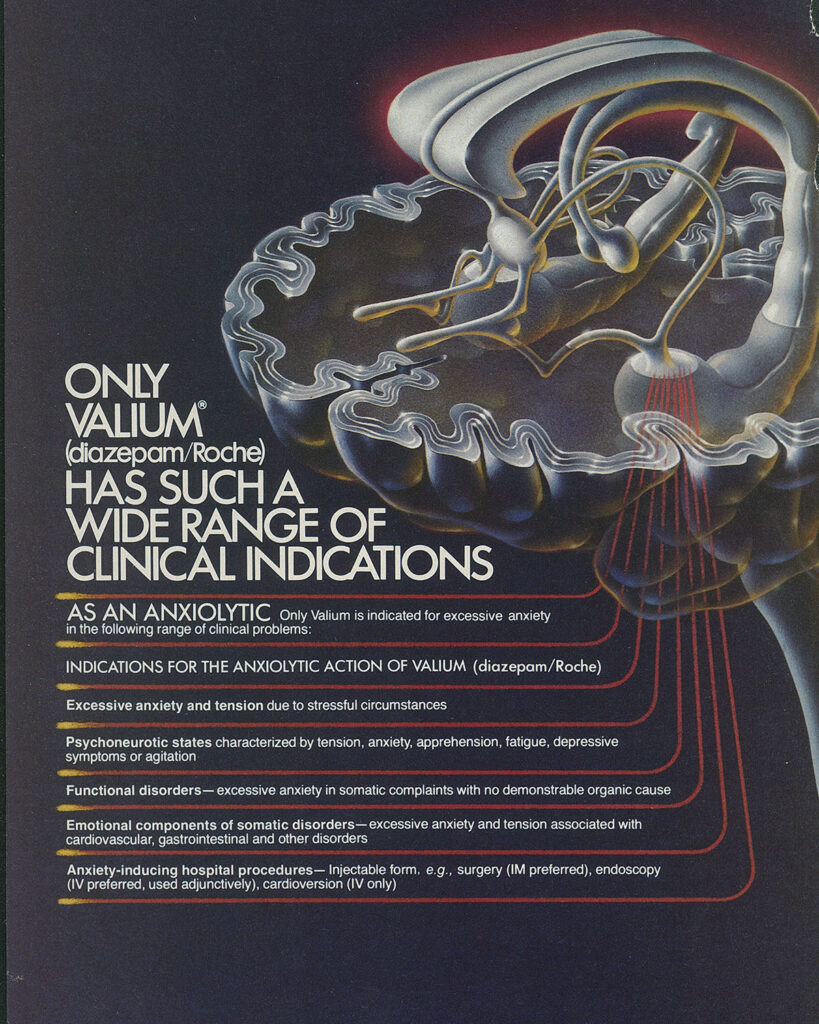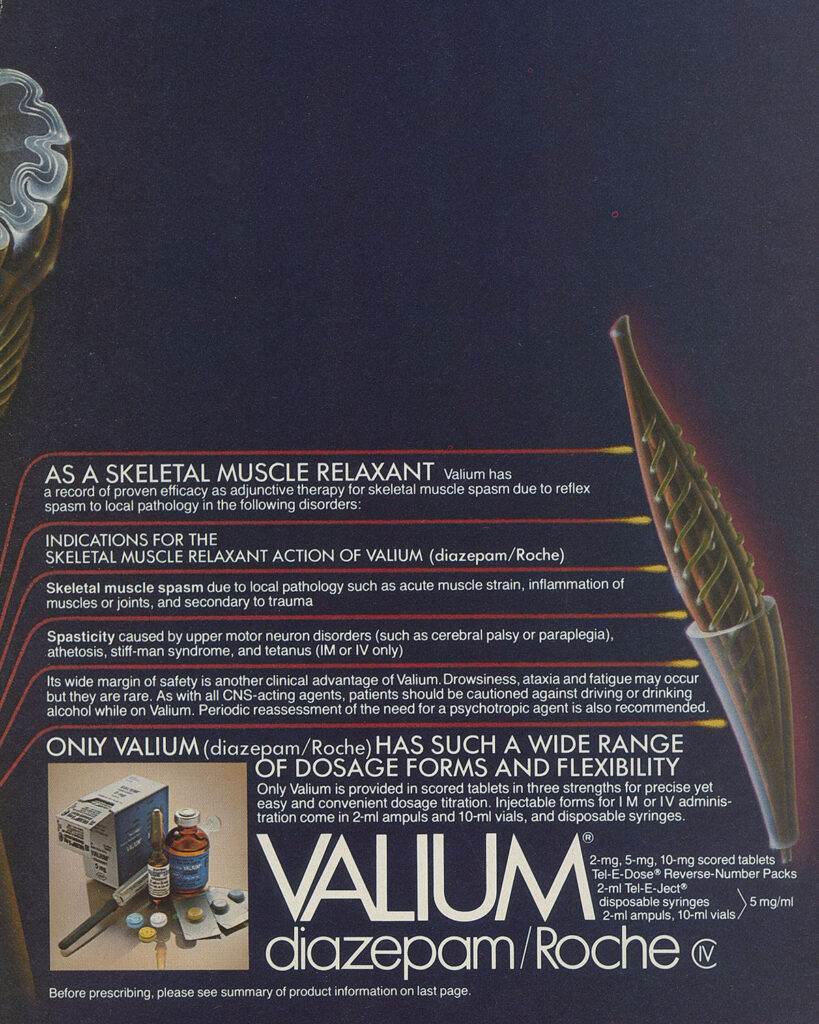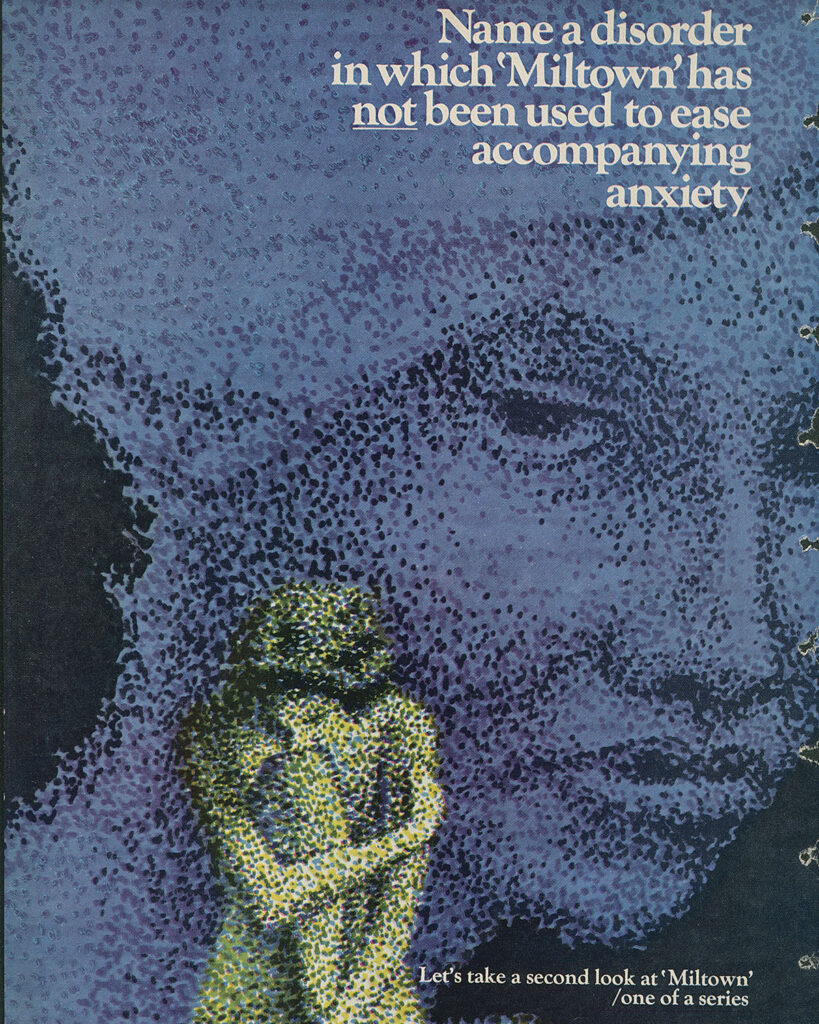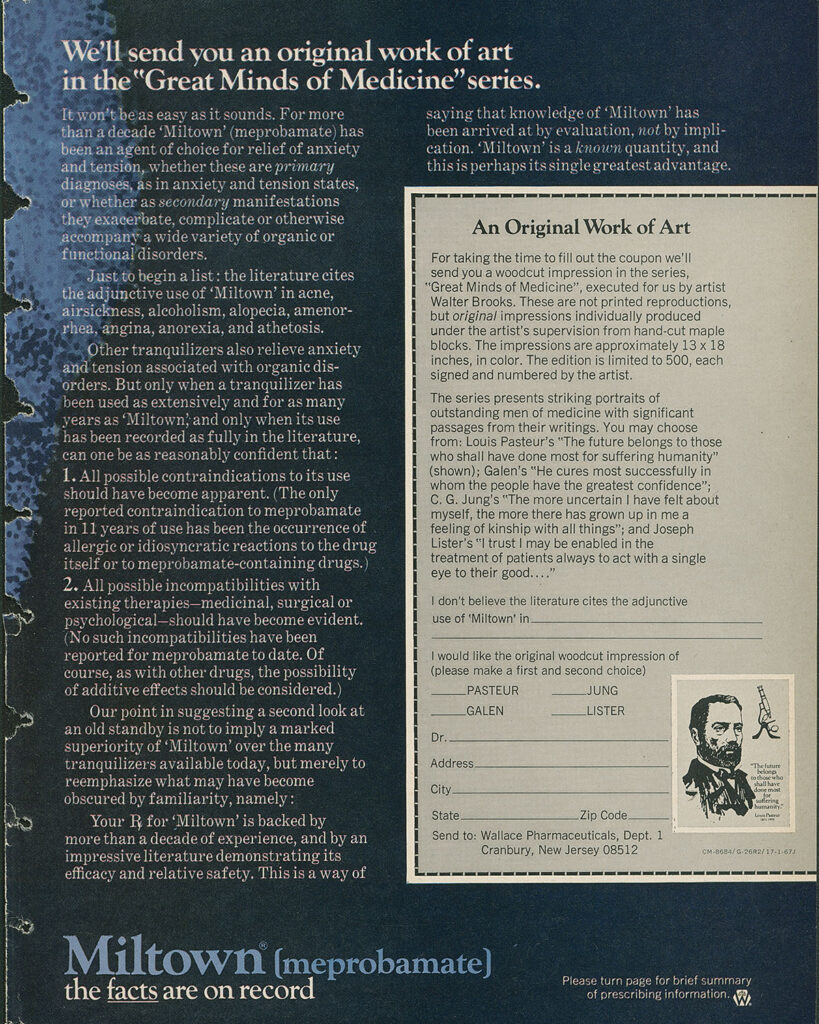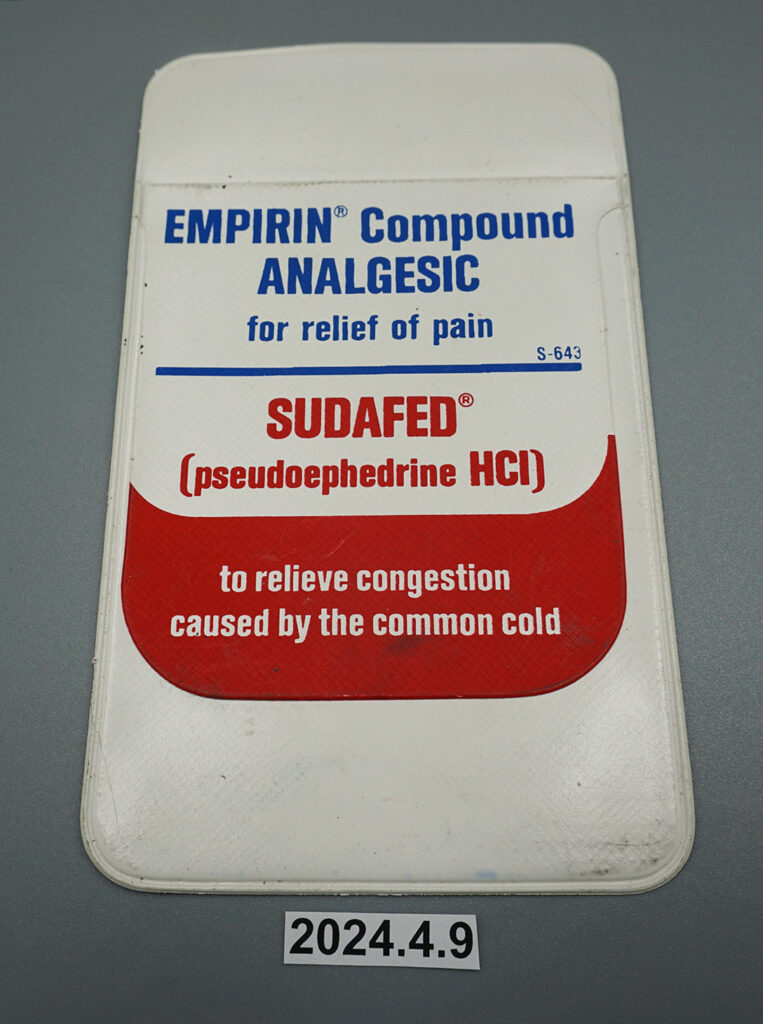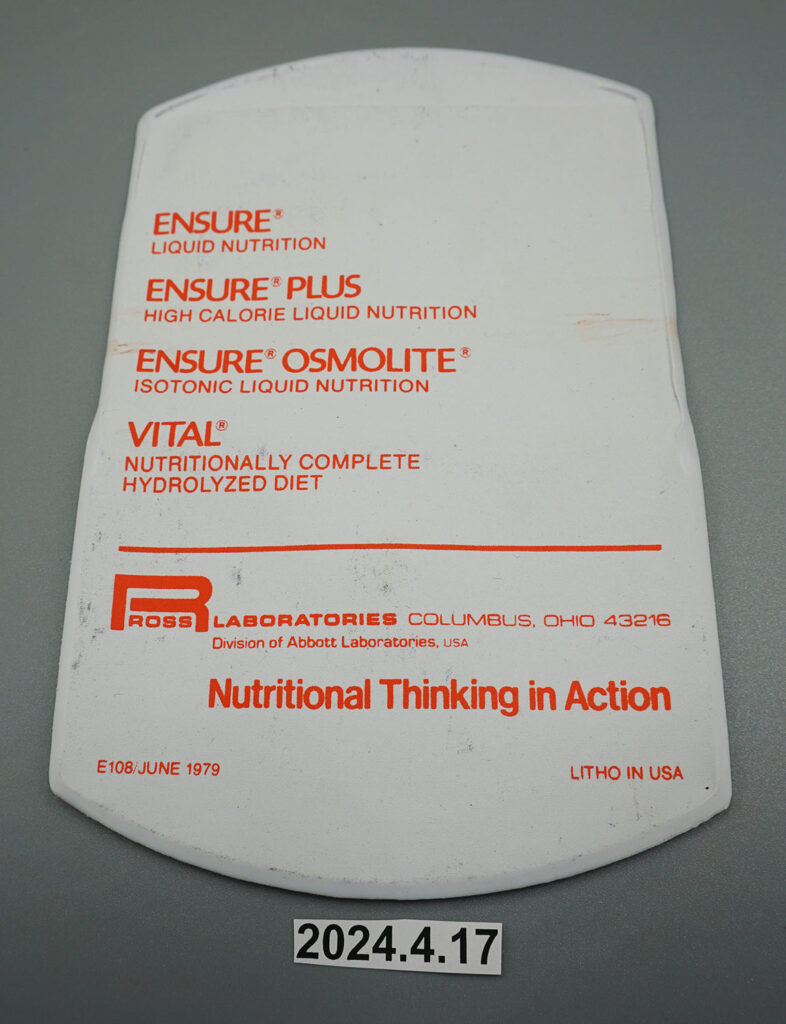From the 1930s to the 1980s, ads for drugs were aimed almost exclusively at pharmacists and physicians. Typically, advertising was conducted in one of two ways: ads were placed in magazines directed at pharmacists or they were sold in-person by pharmaceutical marketing representatives, commonly known as detailers or detailmen. Detailers were (and still are) a fixture of the medical industry, but opinions of them have been mixed. One humorous article published in the New York Physician around 1957 features several bothersome detailman archetypes, including “The Teacher” who “understands at once that we were poorly prepared at Medical School and that we have never read a scientific journal or attended a meeting since graduation” and “The Patriot” who swears by the product he is selling to an excessive degree. However, many physicians seemed to trust detailers as providers of medical information. In 1954 one doctor wrote in The Bulletin, a magazine aimed at physicians, that detailers are “by and large, fine fellows” who provide information that a doctor would not care to read had it arrived by mail.
By the 1970s, detailmen were becoming increasingly innovative in their marketing techniques. In addition to providing information about the drugs they were selling, they also began to provide free merchandise that had the labels of certain drugs or companies printed on it. Mugs, pens, pocket protectors, and various other knickknacks were all manufactured for this purpose. This practice fell out of favor in 2009 after the Pharmaceutical Research and Manufacturers of America–a prominent pharmaceutical trade organization–imposed a voluntary ban on the basis that gift giving may influence prescribing habits. However, this ban did not impose restrictions on non-physical gifts, and it remained common for detailers to provide free meals in exchange for an opportunity to pitch a certain drug, although this varied widely depending on state law.
In the 1980s, a combination of factors–including the growing prevalence of televisions in American households and a healthcare system which was increasingly prioritizing the patients’ decisions over the authority of physicians–contributed to the emergence of direct-to-consumer advertising, or DTCA. With regards to regulation this was uncharted territory, and the FDA called for a voluntary moratorium on DTCA in 1983 but did not ban it outright. An article from The Consumer, a magazine published by the FDA, provides some insight into what they were thinking. Both sides of the argument were presented: “the ads could result in a more informed consumer who would make better use of drugs”, or it could “make people ask for drugs they really don’t want or need”. According to the article some pharmaceutical companies such as Merck–which engaged in one of the first DTCA campaigns in 1981–shared this ambivalence, believing DTCA should be used “only in rare instances”.
Ultimately, the FDA resolved not to devise any additional regulations on DTCA. However, old regulations which stipulated drug advertising provide consumers with a “fair balance” of information still applied. For the most part, these requirements made DTCA unviable for many companies as they required an excessively large block of time to be purchased from television networks in order to list all the potential side effects. In the late 1990s, however, the FDA relaxed these regulations, largely due to pressure from drug manufacturers. Advertisers could now provide a summarized list of potential side effects or provide a toll-free number where prospective patients could get more information if desired. This update in legislation was followed by an explosion in DTCA: in 2005, $4.6 billion was spent on DTCA compared to just $340 million in 1995. Since 2009, the spending in DTCA has remained steady at around $6 billion annually.
This Dose of History was brought to you by AIHP Intern, Leo Ryan.
Bibliography:
Donohue, Julie. “A History of Drug Advertising: The Evolving Roles of Consumers and Consumer Protection.” The Milbank Quarterly 84, no. 4 (2006): 659–99. http://www.jstor.org/stable/25098137.
Foster, Paul D. “The Doctor and the Detail Man.” The Bulletin, August 19, 1954. 924-925. Accessed through the American Institute for the History of Pharmacy’s archives.
Harris, Gardener. “Drug Industry to Announce Revised Code on Marketing”. New York Times, July 10, 2008. https://www.nytimes.com/2008/07/10/business/10code.html.
Miller, Roger W. “Would Rx Ads Make People Learn Or Yearn?” The Consumer, October, 1983. 25-27. Accessed through the American Institute for the History of Pharmacy’s archives.
“Prescription Drugs: Medicare Spending on Drugs with Direct-to-Consumer Advertising”. Government Accountability Office, 2021. https://www.gao.gov/products/gao-21-380.
Posner, Lewis and Posner, A. Charles. “Detail Man Dystocia, or Just Give Us The Facts.” New York Physician. c. 1950. Accessed through the American Institute for the History of Pharmacy’s archives.
Ventola, C. Lee. “Direct-to-Consumer Pharmaceutical Advertising: Therapeutic or Toxic?” Pharmacy and Therapeutics, 36, no. 10 (2011): 681-684. https://pmc.ncbi.nlm.nih.gov/articles/PMC3278148/#sec5.

